Wad Inseter Machine
Wad Inseter Machine Specification
- Control System
- Fully Automatic
- Voltage
- 110-215 Volt (v)
- Features
- Good Quality
- Power Source
- Electricity
- Operating Type
- Semi Automatic
- Surface Treatment
- Coated
- Color
- Silver
- Warranty
- 1 year
Wad Inseter Machine Trade Information
- Minimum Order Quantity
- 1 Piece
- Supply Ability
- 10 Pieces Per Month
- Delivery Time
- 10 Days
About Wad Inseter Machine
Wad Inserter Machine: Technical Description
A wad inserter machine is a specialized piece of equipment used in packaging lines to automate the process of inserting wads or liners into caps for various containers, such as bottles and jars. These wads provide crucial sealing and protection for the contents, ensuring they remain fresh and uncontaminated. Below is a detailed technical description of a typical wad inserter machine, including its components, operational principles, specifications, and features.
1. Machine Components
- Main Frame
- The structural base of the machine, typically made from stainless steel or other durable materials to ensure stability and cleanliness.
- Cap Feeder
- An automatic system, such as a hopper or vibratory feeder, that supplies caps to the insertion mechanism.
- Designed for various cap types and sizes, ensuring correct orientation and positioning for insertion.
- Liner Feeder
- A system for supplying wads, which can be pre-cut liners or a roll of material that is cut on-demand.
- If cutting is involved, this may include a cutting die and mechanism to punch out liners from a continuous roll.
- Insertion Heads
- The mechanism that picks up and inserts wads into the caps.
- This can include one or more heads (single or double-head configurations) to increase production speed.
- Control Panel
- A user interface with a programmable logic controller (PLC) for controlling machine operations, including speed, settings, and diagnostics.
- Typically features a touch screen for easy operation and adjustments.
- Sensors and Vision Systems
- Optical or mechanical sensors to detect the presence and correct alignment of caps and liners.
- Vision systems may be used for real-time quality control, ensuring liners are properly positioned within the caps.
- Discharge Conveyor
- A conveyor system that transports completed caps to the next stage in the packaging line, such as capping or labeling machines.
2. Operational Principles
- Cap Loading
- Caps are automatically fed into the machine from the cap feeder, oriented correctly for the insertion process.
- Liner Cutting (if applicable)
- If using a continuous roll, the machine cuts the appropriate size liners from the roll and prepares them for insertion.
- Liner Insertion
- The insertion heads pick up the liners using a suction or mechanical gripping method and place them inside the caps with precision.
- Depending on the design, the heads may operate in a sequence or simultaneously (for dual-head models) to increase efficiency.
- Quality Control
- Sensors check for proper alignment and insertion of the liners. Defective caps (e.g., missing or misaligned liners) are identified and rejected automatically.
- Cap Discharge
- Completed caps with inserted liners are transferred to a discharge conveyor, ready for further processing in the production line.
3. Technical Specifications
- Production Speed
- Typically ranges from 50 to 300 caps per minute, depending on the machine design and cap size.
- Cap Size Compatibility
- Adjustable for various cap sizes, usually ranging from 20mm to 120mm in diameter.
- Liner Material Compatibility
- Capable of working with multiple liner materials such as foam, paper, plastic, and aluminum, depending on sealing requirements.
- Power Supply
- Usually operates on single-phase or three-phase power, with power consumption varying based on machine size and configuration (e.g., 1-5 kW).
- Air Supply
- Some machines may require compressed air for operating suction cups or pneumatic components, typically requiring 4-6 bar pressure.
- Dimensions
- Footprint can vary, but machines generally have a compact design, measuring around 1.5m x 1.2m x 1.5m (length x width x height), depending on the configuration.
4. Key Features
- High Efficiency
- Automation significantly reduces labor costs and increases production output, making it suitable for high-volume applications.
- Flexibility
- The ability to easily switch between different cap sizes and liner types allows manufacturers to adapt to varying product lines.
- User-Friendly Interface
- The control panel features intuitive controls, making it easy for operators to set parameters and monitor performance.
- Robust Construction
- Designed for durability and hygiene, often made with stainless steel and easy-to-clean components to meet industry standards.
- Minimal Maintenance
- Built for low maintenance, with easily accessible parts for servicing and cleaning.
5. Applications
- Food & Beverage Inserting liners in caps for sauces, juices, and other liquid products.
- Pharmaceuticals Inserting tamper-evident liners in medicine bottles to ensure product integrity and safety.
- Cosmetics & Personal Care Sealing caps for lotions, creams, and perfumes.
- Household Chemicals Lining caps for cleaning products and detergents to prevent leakage.
Conclusion
An automatic wad inserter machine is an essential component in modern packaging operations, providing high efficiency, flexibility, and precision in the liner insertion process. With its advanced features and robust design, this machine is ideal for various industries, ensuring that products are securely sealed and ready for distribution.
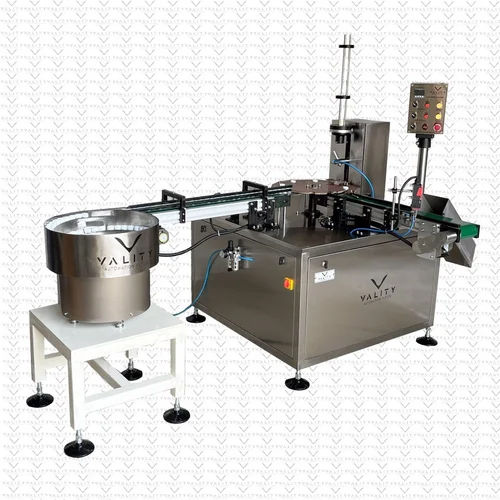
Price 449000 INR/ Piece
- Minimum Order Quantity
- 1 Piece
- Supply Ability
- 10 Pieces Per Month
- Delivery Time
- 10 Days

Price:
- 50
- 100
- 200
- 250
- 500
- 1000+
More Products in Cap lining machine Category
Bottle Cap Lining Machine
Price 449000 INR / Piece
Minimum Order Quantity : 1 Piece
Warranty : 1 Year
Automatic Grade : Automatic
Power Source : Electricity
Drive Type : Electric
Cap Lining Machine
Price 500000 INR / Unit
Minimum Order Quantity : 1 Unit
Warranty : Yes
Automatic Grade : SemiAutomatic
Power Source : Electricity
Drive Type : Electric
Wadding Lining Assembling Machines For Plastic Cap
Price 449000 INR / Piece
Minimum Order Quantity : 1 Piece
Warranty : 1 Year
Automatic Grade : Automatic
Power Source : Electricity
Drive Type : Electric
Double Head Cap Wad Inserting Machine
Price 449000 INR / Piece
Minimum Order Quantity : 1 Piece
Warranty : 1 Year
Automatic Grade : Automatic
Power Source : Electricity
Drive Type : Electric



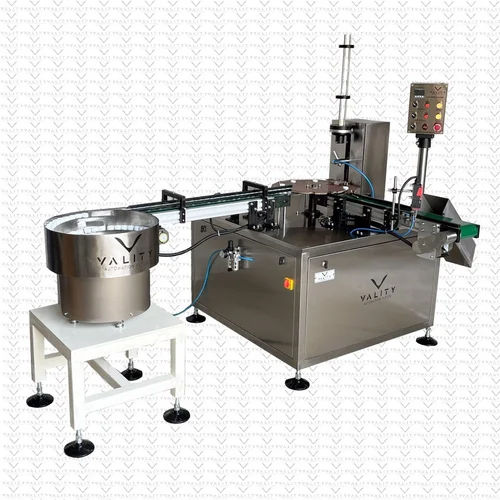
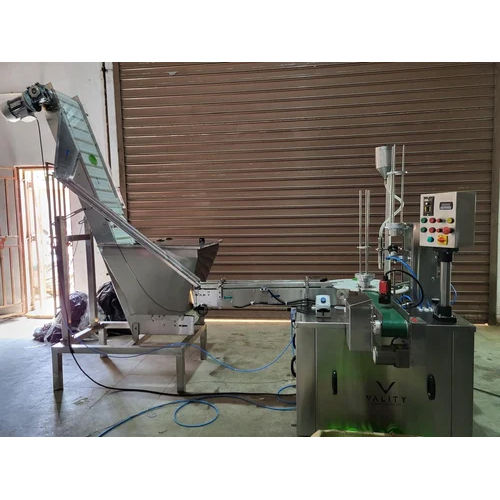
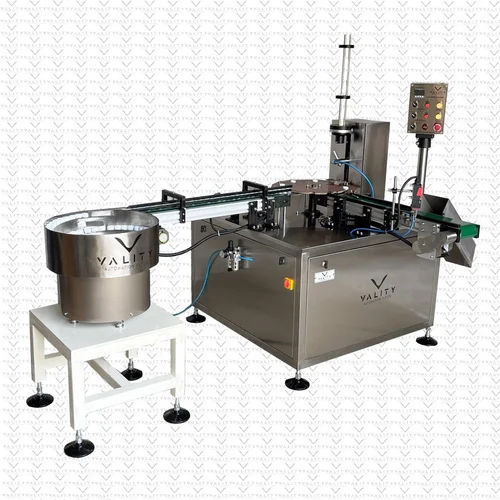
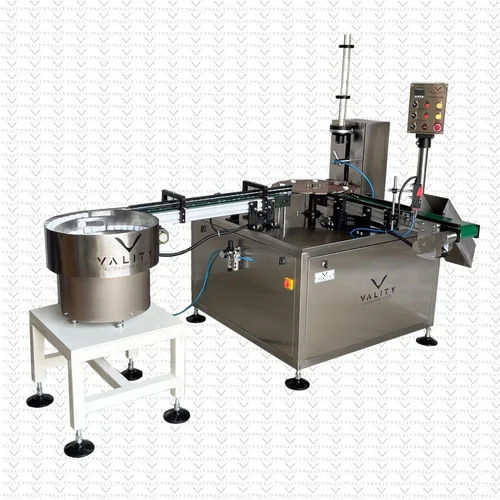


 Send Inquiry
Send Inquiry Send SMS
Send SMS Call Me Free
Call Me Free